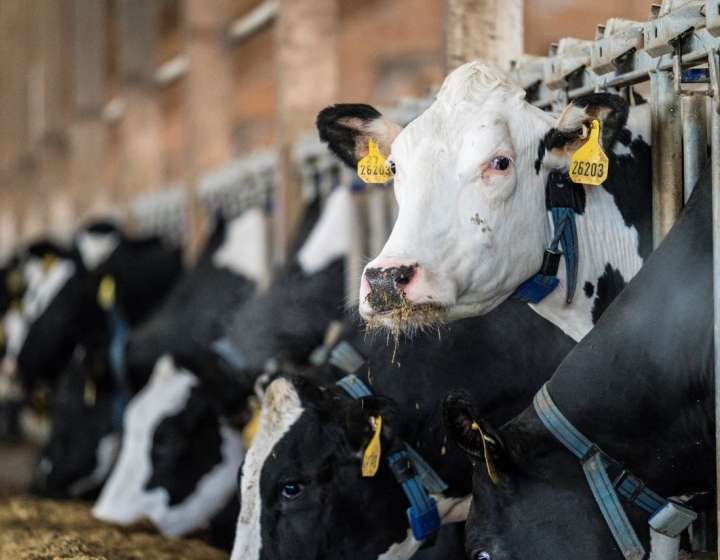Genetic transcription ‘pause’ is focus of NASA grant
DNA is a blueprint for cells to make proteins that allow those cells to function properly. To create the proteins, enzymes copy genetic codes from DNA strands and then transfer the instructions onto RNA in a process called transcription.
Almost all forms of animal life – from fruit flies to butterflies to mammals – contain a pause in transcription, a step that appears to allow the transcription machinery to take a break to fine-tune its copying process.
No one knows when this pause originated in the evolution of life. Charles Danko, assistant professor of genetics and molecular biology at the Baker Institute for Animal Health, will investigate that question with a three-year, $790,000 grant from NASA’s Exobiology program.
“NASA is interested in understanding how complicated life arose on Earth, with the thought that if we understand how that happened here, we are more likely to identify extraterrestrial life elsewhere in the universe,” Danko said.
The pause – which was first discovered 30 years ago by Cornell molecular biologist and geneticist John Lis – is a step in transcription where the enzyme RNA polymerase II begins transcribing and then is halted partway through the process and held in place by a specific protein complex.
“There are stages in development where you really want a very precise reaction, this is a way of setting that up,” said James Lewis, a postdoctoral researcher at the Baker Institute. Another protein complex releases the pause so transcription can continue.
“All complex animals tend to have a pause, with the exception of Caenorhabditis elegans,” a type of worm extensively used in research, Danko said.Proteins that create the pause are found in Dictyocelium, slime molds that are a common ancestor to fungi and mammals.
“We think that it is really ancient, more so than expected” Danko said. “Our hypothesis is that the pause appeared in a eukaryote that was a common ancestor of Dictyocelium and mammals, and that C. elegans lost it.”
One objective of the grant is to examine many different organisms that are widely distributed across the phylogenetic tree (branching diagrams that depict the evolutionary relatedness among groups of organisms), and to look for how RNA polymerase is distributed across the whole genome of these organisms. “The expectation is that some organisms will have this pause, and some will not,” Danko said.
Another objective is to determine whether the proteins that lead to the release of the pause actually may have originated before the proteins that initiate it. A study of yeast by Greg Booth, a graduate student in Lis’ lab, showed some organisms that didn’t have a transcription pause still had the mechanism for release. “Why do you need to create a release if you don’t have a pause?” Danko asked.
By going further back in time in the phylogenetic tree, to plant life, the researchers want to see whether the proteins for release exist without the proteins that cause the pause. “If they do, then it suggests essentially that the release came first,” Danko said. The researchers hope these investigations will help them narrow down when the pause first appeared in evolution.
The grant is given by NASA’s Science Mission Directorate’s Planetary Science Division, Research Opportunities in Space and Earth Science, Astrobiology: Exobiology Program Element.
By Krishna Ramanujan




